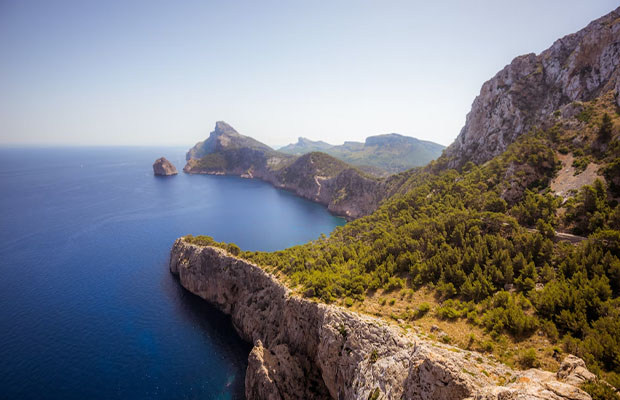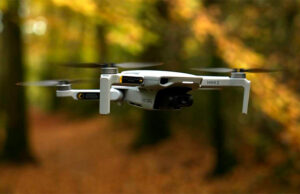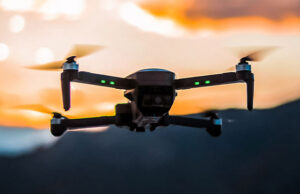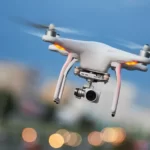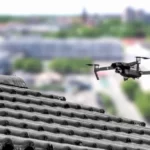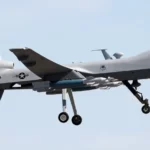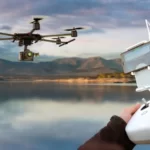In the last few years, we’ve seen a huge rise in the popularity of drones, especially camera drones.
When using a drone to take landscape photos, you have access to a wide variety of new image types and are given more compositional freedom than when using a ground-based camera.
We’ll look at some of these essential landscape drone features in this article so you can take better drone photos.
Table of Contents
Features To Use For Landscapes With A Drone
1. Raw Format
When using your drone, use the raw format whenever possible if you’re serious about your landscape photography.
When viewed from above, aerials frequently concentrate on a large area, and the lighting patterns in the landscape can vary greatly. There will be a wide range in exposure if there are highlights and shadows throughout the scene.
Similar to taking photos on the ground, shooting in raw enables you to get the most color information and recover the majority of your scene’s underexposed or overexposed areas.
2. Burst Mode
I hear you asking, “Why would you use burst mode for a landscape?” With a drone in flight, there is obviously a lot of movement. You can increase your chances of getting a photo without motion blur by using burst mode, which allows you to shoot 3, 5, or 7 photos every time you take one.
Without your knowledge, a bug, bird, or even a car could come into view. But if you use burst mode, you’ll have a lot of other choices where this incursion is probably not an issue.
It’s up to you how many frames you use. If you’re unsure, start with a 5-frame burst and see how it goes.
3. AEB (Auto Exposure Bracketing)
It can be challenging to achieve the ideal exposure in a complex scene, even when shooting in raw format. The AEB mode, which enables you to automatically take 3 or 5 frames at various exposures, is excellent in these circumstances.
Then, using Lightroom or Photoshop, you can combine these frames.
This method is probably familiar to you as HDR photography with multiple exposures. Both on the ground and in the air, this idea works really well.
Some DJI drones do have HDR modes that will automatically blend the photos for you. However, using AEB and handling the blending yourself is actually much preferable.
4. Panoramic Mode
Fitting the entire scene into the frame can be difficult, even when you’re shooting from the air with a wide lens.
Well, another great landscape drone feature to use is the panoramic mode (or “pano mode” as it is sometimes abbreviated to).
This enables you to take numerous frames that are automatically stitched together. The drone will slightly reposition itself between each shot in order to achieve a single, larger image.
5. Tripod Or Cine Mode
Change your drone’s mode to Cine or Tripod once you’ve positioned it roughly where you want to shoot.
This causes the drone to move more slowly and makes the controls less sensitive. It enables you to fine-tune the photograph’s positioning and composition.
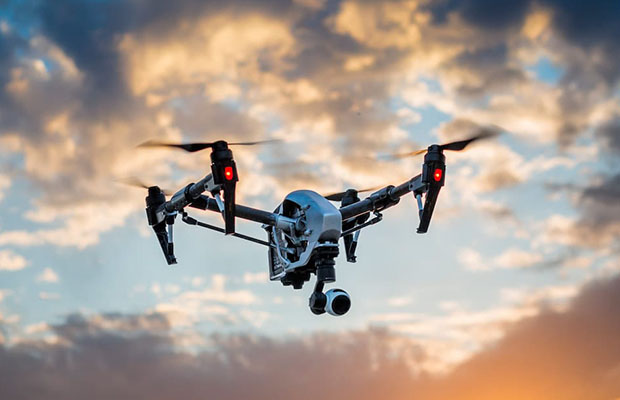
Choose The Right Drone For Landscape Photography
There are numerous brands and varieties of drones to choose from, just like there are with any electronic consumer product on the market. Fortunately, we are concentrating on a relatively specialized drone type that is ideal for taking landscape photos.
RTF Drones
The first thing you must realize is that not every drone is equipped to take to the air right out of the box. We’ll only be concentrating on those that are RTF (Ready-To-Fly), which are all of them. Additionally, there are DIY (Do-It-Yourself), BNF (Bind-N-Fly), and ARF (Almost-Ready-to-Fly) drones. We won’t go into detail about the other drones because, as we previously stated, our focus will be on RTF drones.
Camera
Drones with cameras are obviously the first thing you need to look for. The majority of built-in drone cameras don’t have sensors as big as APS-C or Full-frame on DSLRs, but that doesn’t mean they’re bad. One of the most well-liked drones for photography is the DJI Phantom 3 Professional. A 4K video can be captured by its 12MP 1/2.3 CMOS sensor. More significantly, this camera supports RAW image recording. You’ll want a camera that can shoot in RAW because it will give you much more flexibility when editing your photos afterward. Another feature to look for in a camera is bracketing, which enables the camera to take three to five photos in a row at various exposure levels.
There are also other choices. Choose a drone without a built-in camera but with a built-in camera-ready mount so you can mount any camera you like to it. If you’re serious about going pro, you might want to think about the DJI Inspire 2. Several DJI cameras that are compatible with the Inspire 2 and are available separately will be available to you in this situation. Zenmuse X4S, X5S, and X7 are available. They each have a Super 35mm, Micro Four Thirds, and a 1-inch sensor.
If you plan to use a GoPro camera with your drone, you might also want to take that into consideration. The DJI Phantom 2 for GoPro, the 3DR SOLO Quadcopter, and the GoPro Karma are a few intriguing options.
Landscape Legend Lightroom Presets: With the help of our presets, you can save time and achieve fantastic results. The most complete set of Lightroom presets made especially for landscape and nature photography is called Landscape Legend. On Sale Now!
Stabilization
A mechanical stabilization system and a camera gimbal are both built into drones that are serious about aerial photography. For a drone used for taking aerial photos of the landscape, the stabilization system is crucial because it enables the camera to remain still in the air and counteract wind-related vibrations and movements. You will be able to use the bracketing mode and take longer exposures up to several seconds without experiencing motion blur as a result. Some cameras, whether digital or optical, will have their own stabilization system that should offer additional stabilization.
Wide Angle Lens
Even though the majority of drone cameras have wide-angle lenses, including those like GoPro cameras that are purchased separately, you should confirm the precise width of the lens. Some lenses are ultra wide angle, i.e. fish eye lenses which produce visually distorted images.
Maximum Range, Altitude, And Flight Time
A few dozen meters is the maximum distance that some drones can fly, while others can fly for several kilometers before they leave their range. The highest altitude is comparable. As you might expect, this has a significant impact on composition and flexibility. You notice a ridge of mountains that you want to photograph. Verify the drone’s ability to handle the height and distance.
The maximum flight time, or battery life, of drones in general, is one of their weak points. Drones that are more expensive can fly continuously for 25 to 35 minutes as opposed to the 5 to 10 minutes that entry-level drones can only fly for. Regardless of the drone you choose, we advise getting some extra batteries.
FPV
One of the most crucial drone features for any drone landscape photographer is this. First-Person-View is referred to as FPV. The pilot receives a real-time live video feed from the drone’s camera via a smartphone or tablet screen when the drone is equipped with this feature. You can then properly compose the shot since you can see what the drone camera sees. Some drones even come with FPV goggles so you can experience a true first-person perspective. Although not necessary, this does make for an interesting experience.
In Conclusion
True, not everyone enjoys using drones. However, they’re an excellent tool for landscape photography, and by using one, you’ll give your work a new creative direction.
We’ve discussed some of the most important landscape drone features to use as well as some overarching ideas you can apply to your photography.
Read More:
